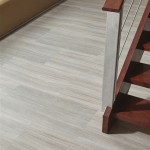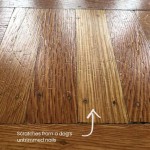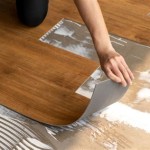Glue Down Vinyl Flooring Planks: A Comprehensive Guide
Glue down vinyl flooring planks represent a highly versatile and resilient flooring solution suitable for a wide range of residential and commercial applications. Distinguished by their direct adhesion to the subfloor using a specialized adhesive, these planks offer stability, durability, and design flexibility surpassed by few other flooring options.
Understanding the characteristics, advantages, and installation process of glue down vinyl flooring is critical for making an informed decision regarding flooring materials. The following sections explore the key aspects of this flooring type, providing a thorough overview of its features and potential benefits.
Understanding the Composition and Construction
Glue down vinyl flooring planks are typically constructed in multiple layers, each serving a specific purpose in contributing to the overall performance and longevity of the flooring. The general composition includes a wear layer, a print layer, and a backing layer. The specific materials used in each layer and their thicknesses influence the plank’s durability, appearance, and water resistance.
The
wear layer
is the topmost layer, engineered to resist scratches, scuffs, stains, and fading. Its thickness, measured in mils (thousandths of an inch), directly correlates with the flooring’s ability to withstand heavy foot traffic and wear. For residential applications, a wear layer of 12 mils or greater is generally recommended, while commercial settings may require 20 mils or more.Beneath the wear layer lies the
print layer
, which provides the visual aesthetic of the flooring. Advanced printing technologies enable realistic replication of natural materials such as hardwood, stone, and tile. The quality of the print layer impacts the realism and overall appearance of the installed flooring.The
backing layer
provides stability and support to the plank. It is designed to bond securely with the adhesive and the subfloor, preventing movement and ensuring a long-lasting installation. The composition of the backing layer can vary, with some options incorporating fiberglass reinforcement for added dimensional stability.Beyond these primary layers, some glue down vinyl flooring planks may include additional features such as enhanced sound insulation or antimicrobial treatments. These features can further enhance the functionality and appeal of the flooring.
Advantages of Glue Down Installation
The glue down installation method offers several distinct advantages over other flooring installation techniques, particularly when compared to floating vinyl flooring systems. These benefits stem from the direct bond between the flooring and the subfloor, resulting in superior stability, dimensional stability, and moisture resistance.
Enhanced Stability and Durability:
The direct adhesion to the subfloor ensures that glue down vinyl planks remain firmly in place, even under heavy foot traffic and furniture loads. This stability minimizes the risk of shifting, buckling, or gapping, resulting in a more durable and long-lasting flooring installation. This is particularly beneficial in high-traffic areas, commercial spaces, and areas prone to significant temperature or humidity fluctuations.Improved Moisture Resistance:
The glue down installation, when combined with proper sealing, creates a more watertight barrier compared to floating floors. This reduces the risk of moisture seeping beneath the flooring, which can lead to mold growth, subfloor damage, and adhesive failure. This superior moisture resistance makes glue down vinyl an excellent choice for kitchens, bathrooms, laundry rooms, and basements.Quieter Underfoot:
The direct bond to the subfloor reduces the potential for hollow sounds and vibrations that can occur with floating floors. This results in a quieter and more comfortable walking surface, especially in multi-story buildings or areas where noise reduction is a priority. The dense contact with the subfloor eliminates air pockets that can amplify sound.Design Flexibility:
Glue down vinyl planks offer greater flexibility in design layout compared to some other flooring options. Intricate patterns and custom designs can be easily achieved without the limitations imposed by interlocking systems or the need for expansion gaps. This allows for more creative and personalized flooring installations.Thinner Profile:
Glue down vinyl planks are typically thinner than click-lock vinyl, enabling seamless transitions to adjacent floor coverings, such as carpet or tile. This reduced thickness also minimizes the impact on door clearances and existing trim, simplifying the installation process in many cases.The Installation Process: Key Considerations
Proper installation is crucial for ensuring the longevity and performance of glue down vinyl flooring planks. The installation process involves careful subfloor preparation, adhesive application, and plank placement. Adhering to manufacturer's instructions and using appropriate tools and materials are essential for a successful outcome.
Subfloor Preparation:
The subfloor must be clean, dry, level, and structurally sound before installation can begin. Any existing flooring materials, adhesives, or debris must be removed. Cracks, holes, or uneven surfaces should be repaired with a suitable patching compound. Irregularities in the subfloor can telegraph through the vinyl flooring and compromise its appearance and performance. The moisture content of the subfloor should be checked and confirmed to be within acceptable levels as specified by the flooring manufacturer.Adhesive Selection:
Choosing the correct adhesive is paramount for a successful glue down installation. Different adhesives are formulated for various subfloor types and environmental conditions. Consult the flooring manufacturer's recommendations to ensure compatibility and optimal bonding. The adhesive should also be appropriate for the specific application, such as residential, commercial, or high-moisture environments. Using an incompatible adhesive can lead to bonding failures and costly repairs.Adhesive Application:
Apply the adhesive evenly and according to the manufacturer's instructions, using a notched trowel of the recommended size. The proper spread rate and open time (the time allowed for the adhesive to become tacky before applying the planks) are critical for achieving a strong bond. Avoid applying too much adhesive, which can result in adhesive squeeze-out and a messy installation. Applying too little adhesive can compromise the bond strength and lead to plank movement.Plank Placement:
Carefully align and place the vinyl planks onto the adhesive, ensuring tight seams and proper alignment. Roll the planks with a heavy roller to ensure full contact with the adhesive and to eliminate any air pockets. Work in small sections to prevent the adhesive from drying out before the planks are installed. Maintaining consistent alignment is essential for a professional-looking installation.Seam Treatment (Optional):
Some glue down vinyl planks may require or benefit from seam sealing, particularly in high-moisture areas. Seam sealant helps prevent water from penetrating the seams and damaging the subfloor. Follow the manufacturer's instructions for applying seam sealant, ensuring that it is compatible with the vinyl flooring and adhesive.Curing Time:
Allow the adhesive to cure fully according to the manufacturer's instructions before allowing heavy foot traffic or furniture loads on the flooring. Premature use can compromise the bond and lead to plank movement or damage. The curing time can vary depending on the type of adhesive and environmental conditions.Professional installation is highly recommended, especially for large or complex projects. Experienced installers have the knowledge and tools necessary to ensure a proper and long-lasting installation.
Maintenance and Care
Maintaining glue down vinyl flooring is generally straightforward, requiring regular cleaning to remove dirt, dust, and spills. Proper maintenance can extend the life of the flooring and preserve its appearance.
Regular Cleaning:
Sweep, dust, or vacuum the flooring regularly to remove loose dirt and debris. Use a soft-bristled brush or vacuum attachment to avoid scratching the surface. Regular cleaning prevents the buildup of dirt and grime, which can dull the finish and make the flooring more difficult to clean.Damp Mopping:
Damp mop the flooring with a pH-neutral cleaner specifically designed for vinyl flooring. Avoid using harsh chemicals, abrasive cleaners, or excessive amounts of water, as these can damage the wear layer or penetrate the seams. Always follow the cleaner manufacturer's instructions.Spill Cleanup:
Clean up spills immediately to prevent staining or damage. Blot the spill with a clean cloth, working from the outside inward. Avoid rubbing the spill, as this can spread the stain.Protecting the Surface:
Use furniture pads under the legs of furniture to prevent scratches and dents. Avoid dragging heavy objects across the floor. Place mats at entrances to trap dirt and moisture.Avoid Abrasive Cleaners and Tools:
Never use abrasive cleaners, scouring pads, or steel wool on vinyl flooring, as these can scratch the surface and damage the wear layer. Avoid using steam cleaners, as excessive heat can damage the adhesive and cause the flooring to buckle.By following these simple maintenance guidelines, glue down vinyl flooring can maintain its appearance and performance for many years.

Floating Vinyl Plank Flooring Vs Glue Down 99cent Floor

Does Vinyl Flooring Need To Be Glued Down Thediyplan

Glue Down Vs Floating Lvp Which Is Better Whole Cabinet Supply

Glue Down Vinyl Flooring Lifestepp

Glue Down Vs Floating Vinyl Flooring Pros And Cons

China Glue Down Pvc Flooring Manufacture And Factory Aolong

Lean About Everlife Glue Down And Plank Flooring

Glue Down Vinyl Plank Flooring Tagged 5 5mm

Glue Down Vs Floating Luxury Vinyl Flooring

Deco S Colors Glue Down Floor And Wall Diy Mambo Wood Aged 6 In X 36 Multi Tonal Luxury Vinyl Plank 30 Sq Ft Case Cms2 The Home Depot
Related Posts








